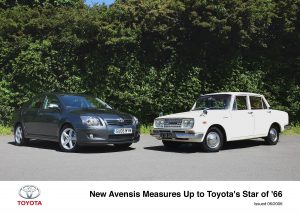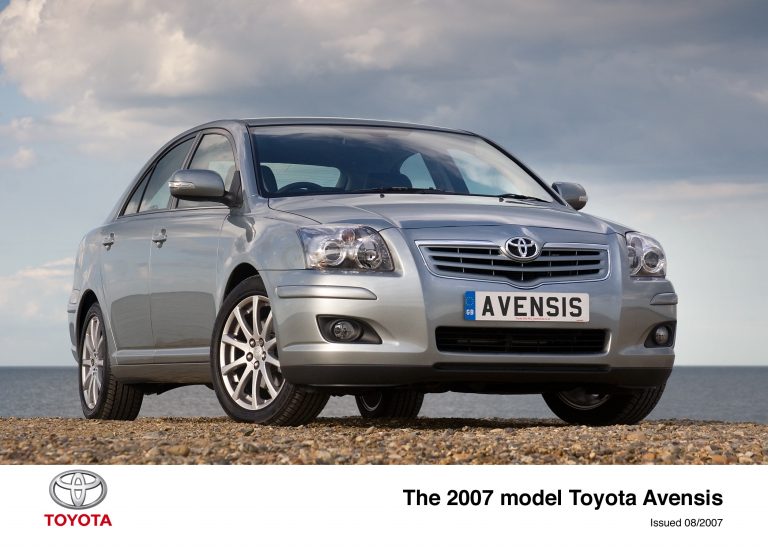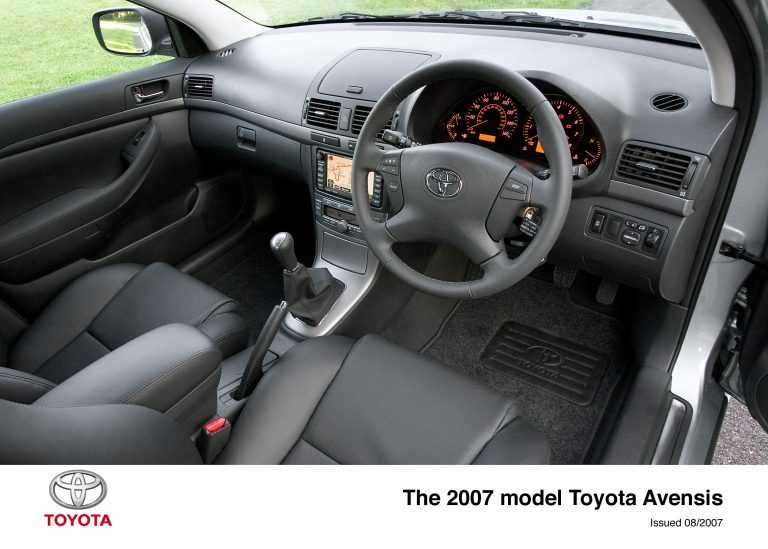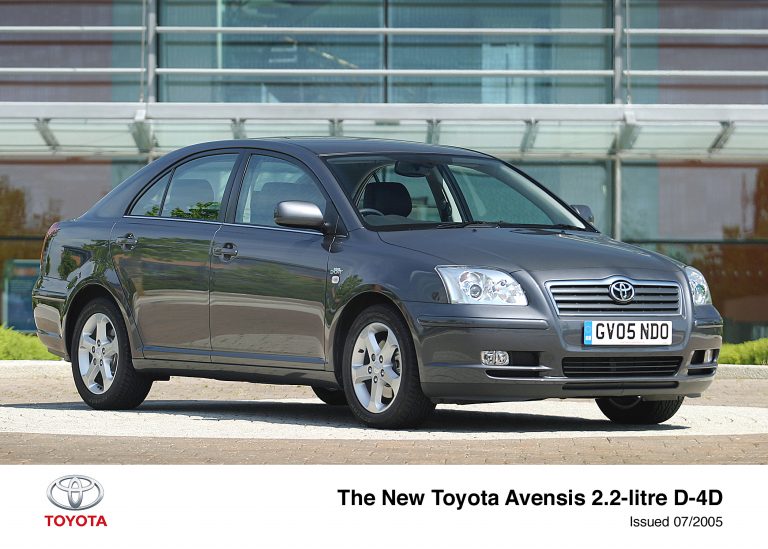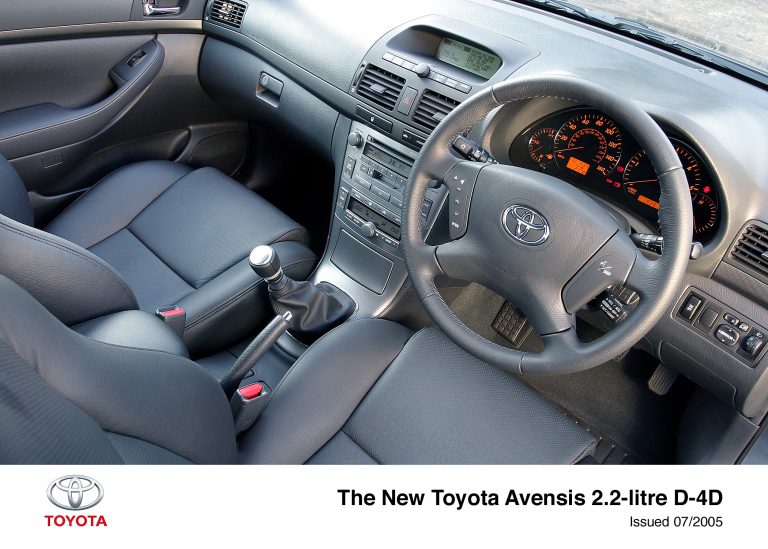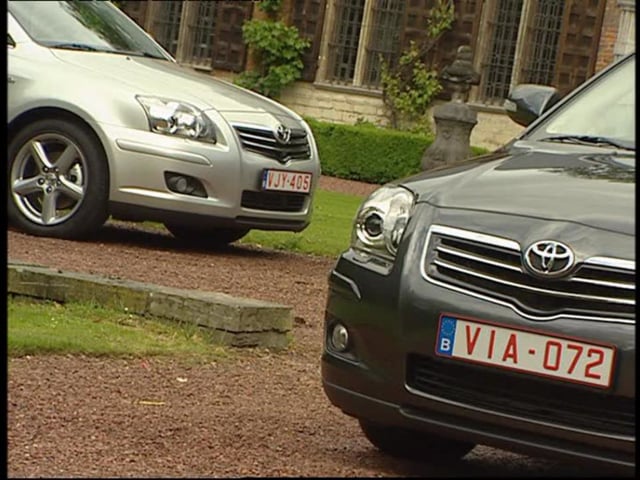New Avensis Measures Up To Toyota’s Star Of ’66
Two models span 40 years of Toyota in Great Britain
1966: World Cup glory for England, mini skirts, Harold Wilson, The Beatles and the first full year for Toyota sales in the UK.
2006: Another cup campaign, skirts any length you want, Tony Blair, Arctic Monkeys and Toyota claims a record 5.5 per cent share of the UK new car market over the past year.
A lot has happened in 40 years and Toyota has taken the opportunity of the launch of its latest model, the new Avensis, to cast an eye back to where its UK success story began, with a modest but ambitious saloon called the Corona.
A 1966-vintage Corona is the new addition to the Toyota press fleet. In better condition than many other 40-year-olds around the company, it provides a fascinating reference point for understanding just how far automotive engineering and design have progressed.
In the days when a gallon of four-star petrol cost around six shillings (30p) and global warming was as unheard of as Feng Shui and Channel 4, fuel economy and CO2 emissions were not prime concerns for motorists. The Corona’s 74bhp 1,490cc four-cylinder engine returned roughly 26.8mpg, while performance was competitive in its day with its market rivals, with nought to 62mph acceleration in a shade more than 17 seconds and a top speed of 87mph.
The new 2007 Avensis by comparison uses some of the most advanced diesel engines in the world. The Avensis 2.0-litre D-4D 130, which in terms of market position is roughly on a par with the 1960s Corona, returns more than 51mpg in combined cycle driving, accelerates from rest to 62mph in 10.6 seconds and can reach 124mph with no danger of the occupants being shaken to pieces.
And speaking of safety, one of the Corona’s selling points was the optional provision of seatbelts, although those with money to spare in 1966 were more likely to splash out on floor carpeting and a push-button radio to enjoy listening to the BBC Home Service while travelling down the newly-opened Port Talbot by-pass section of the M4.
In 1966 UK road deaths hit a post-war record of 7,985. In 2005, the total was well below half that figure. The new Avensis demonstrates the advances in active and passive safety systems that make Toyotas among the safest cars on the road. The Toyota Minimum Intrusion Cabin Structure (MICS) creates a robust passenger cell that absorbs and diverts impact forces. Occupants are protected by pre-tensioned seatbelts with load limiters, front, side curtain and knee airbags, anti-submarining front seats, side impact bars and a steering column and pedals designed to give less risk of injury in a collision.
And where the Corona offered simple drum brakes with no servo assistance, the Avensis has disc brakes all-round with ABS, Electronic Brakeforce Distribution (EBD) and Brake Assist (BA). Finding themselves in skid, Corona drivers would have to rely on driver skill with the steering wheel and brakes, whereas the Avensis’s Vehicle Stability Control, ABS and Traction Control (TRC) will automatically intervene to help keep the car under control.
The Corona carried a price tag of £1,000 when it was launched, (about £12,000 at today’s prices) the equivalent of about a year’s wages for the average worker. By contrast, the new Avensis range starts at £15,515, equal to around 31 weeks’ average pay.
The Corona made its UK debut at the 1965 London Motor Show and was imported by a family firm, Pride and Clark of London. That firm went on to become Toyota (GB) Ltd in 1967, which in turn came under the full control of Toyota Motor Corporation in 2000 as Toyota (GB) PLC.
The new Toyota Avensis goes on sale in July 2006 and is built exclusively in Britain, at Toyota’s Burnaston plant in Derbyshire. Last year the factory, one of the most efficient in Europe, assembled 156,000 Avensis for markets around the world.
ENDS

